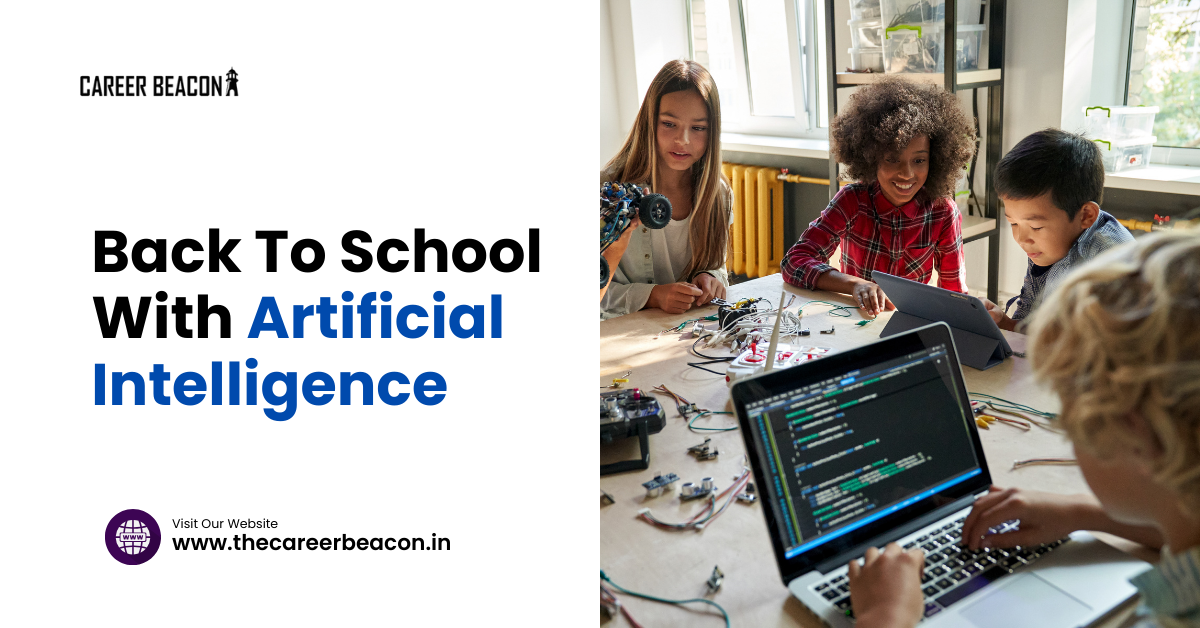
Back To School With Artificial Intelligence
As students head back to school, there’s a new player in the classroom: AI accounting, or artificial intelligence in accounting. Earlier a subject matter concern in science fiction only, AI is now increasingly becoming a part of our lives, even in the teaching-learning process. From adaptive learning systems, which utilise artificial intelligence systems to deliver personalised lessons, to the intelligent assessment and grading system, which utilises the same in delivering automatic grades, artificial intelligence is key to the way students learn and the way teachers teach. It’s high time to look into how AI is emerging in education and what this all means for further development.
Personalised Learning: Saying that education has to be individualised
Possibly, the most important positive effect of AI technology in learning is that real-time tutoring is possible and every learner can get the appropriate treatment accordingly. In conventional teaching systems, the process for each learner may be standardised, and it is not easy to notice the performance of each student, but the function of AI will help in noting these performances and customising the procedure that is assigned to each learner based on their performance. This leads to the development of differential learning plans in that every learner works on personalised learning agendas, hence working at his or her rate.
How It Works
Intelligent tools help to determine the level of knowledge of the learner, and assignments are offered at corresponding levels of difficulty. For instance, if a student is good at math but lacks competency in language arts, then the system will allow the student to be engaged in more difficult mathematical problems and, at the same time, extend his or her time in language arts.
AI Tutors: All the above programs have what some refer to as ‘Extra Help,’ if and when you require it.
AI tutors are used more frequently because they supplement the student’s learning process with extracurricular activities. It encourages teachers to use AI-driven tools that can answer questions, explain concepts, and give students practice problems typical of their level of knowledge. Compared to human tutors, who are limited to the hours they are willing to tutor or the time the learner is willing to be taught, AI tutors are available at any time, hence making learning easier than ever.
Benefits of AI Tutors
- Availability: Students get the help they need at any time and at any place.
- Cost-effective: There is a lot of crucial information that has to be noted before the AI tutor turns out to cost less than the human one.
- Instant Feedback: Students get immediate feedback on their questions; hence, learning is ceaseless.
- Automated Grading: Current educational changes mean that there has been an increase in teachers’ workload, hence the need to bring it down.
Another challenge that is not unknown to teachers is grading, and AI is slowly assisting in this area. With automated grading systems, assignments, quizzes, and even essays can be graded very quickly, and in most cases, the grades assigned are accurate. This not only helps the teachers, who no longer have to spend hours grading, but also the students, who can get fast feedback, which is imperative.
The Future of Grading
Today, AI grading is most applicable to multiple-choice questions and short answers; however, with the development of NLP, it is possible to set up a ranking of assignments, for instance, essays and research papers.
Enhancing Classroom Interaction: The Use of Artificial Intelligence Techniques
The fact is, however, that AI is not only about intelligent tutoring and automatic grading; it is also about improving interactions in a classroom. AI tools such as chatbots can help in monitoring classroom discussions by giving answers to frequently asked questions by the students as well as further resources where needed. It will also encourage shy or hesitant students to engage more in class discussions since they can state their opinions without fear of being judged.
AI in the Classroom: How and Where
- Interactive Learning Platforms: Such applications as Google Classroom’s
- Parent-teacher-student apps rely on machine learning to suggest the right resources or activities suited for students.
- Virtual Reality: The blend of AI and VR can develop highly engaging and effective instructional methodologies for learning notorious concepts or principles.
Preparing Students for the Future: A New Kind of Literacy
Since AI is gradually becoming integrated into different sectors, let the students not only learn how to operate the AI tools but also develop AI literacy. In other words, AI literacy entails awareness of what AI is, the various uses of AI, and other issues to do with ethics. Some schools are integrating education on AI into their programs so that they can equip learners with knowledge of AI so that they can have a place in the future.
AI, or Artificial Intelligence Literacy
- Career Readiness: Understanding AI will become critically important in future occupations.
- Critical Thinking: Students can think critically about AI, including how it operates, where it is used or applied, and how it influences or is used in society.
- Ethical Awareness: AI literacy also incorporates aspects of the ethical use of AI so that students become responsible users of information technology.
Conclusion: Managing AI in Education
The incorporation of artificial intelligence in education is among the most revolutionary activities that have ever struck the education fraternity. As the students return to class, they are already living in a society where technology, particularly in the form of AI, is an asset that can be used to expand their learning. Attaining AI-aided education lets educators create more differentiated, effective, and compelling learning contexts, thus getting students ready for the future.


